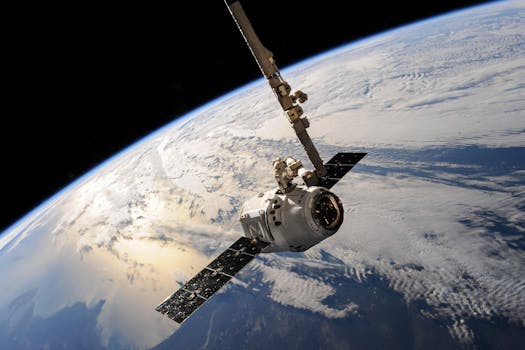The Future of Satellites: Revolutionizing Global Connectivity and Beyond
The future of satellites is poised to revolutionize global connectivity, enabling faster and more reliable communication across the globe. With advancements in space technology, satellites are becoming increasingly important for various applications, including navigation, weather forecasting, and Earth observation.

The Future of Satellites: Revolutionizing Global Connectivity and Beyond
The future of satellites is poised to revolutionize global connectivity, enabling faster and more reliable communication across the globe. With advancements in space technology, satellites are becoming increasingly important for various applications, including navigation, weather forecasting, and Earth observation. The focus keyword, Future of Satellites, is at the forefront of this revolution, driving innovation and transforming the way we live and work.
Satellites have been in orbit around the Earth for decades, providing vital services such as television broadcasting, telecommunications, and navigation. However, the next generation of satellites is expected to be even more powerful and versatile, with capabilities such as high-speed internet, advanced Earth observation, and precise navigation. The development of new satellite technologies, such as reusable rockets and small satellites, is making it easier and more affordable to launch satellites into space, which is driving growth and innovation in the industry.
Advancements in Satellite Technology
One of the most significant advancements in satellite technology is the development of high-throughput satellites (HTS). These satellites use advanced technologies such as spot beams and frequency reuse to provide higher speeds and greater capacity than traditional satellites. HTS satellites are being used to provide broadband internet services to remote and underserved communities, as well as to support the growing demand for mobile data services. For example, the OneWeb constellation of satellites, which is planned to consist of over 600 satellites, aims to provide global broadband coverage and bridge the digital divide.
Another area of advancement is in the field of Earth observation. Satellites such as Landsat 8 and Eu:CROPIS are providing high-resolution images of the Earth’s surface, which are being used for a variety of applications, including agriculture, forestry, and disaster response. These satellites are equipped with advanced sensors and cameras that can detect even slight changes in the environment, allowing for more accurate monitoring and prediction of natural phenomena.
Applications of Satellites
Satellites have a wide range of applications, from navigation and communication to weather forecasting and Earth observation. The Global Positioning System (GPS) is a network of satellites that provides location information and timing signals to GPS receivers on the ground. This system is used for navigation, surveying, and mapping, and is essential for many modern technologies, including smartphones and autonomous vehicles.
Satellites are also used for weather forecasting, providing images and data that help meteorologists predict weather patterns and issue warnings for severe weather events. The Geostationary Operational Environmental Satellite (GOES) series, for example, provides high-resolution images of the Earth’s atmosphere and oceans, which are used to monitor weather patterns and track storms.
Challenges and Opportunities
Despite the many advances in satellite technology, there are still several challenges that need to be addressed. One of the biggest challenges is the increasing amount of space debris in Earth’s orbit, which poses a risk to operational satellites and other space-based assets. The development of new technologies and strategies for removing or mitigating space debris is essential for ensuring the long-term sustainability of space exploration and development.
Another challenge is the need for more efficient and sustainable launch systems. The cost of launching satellites into space is still relatively high, which is limiting the growth of the industry. The development of reusable rockets, such as those being developed by SpaceX and Blue Origin, is helping to reduce the cost of access to space and make satellite launches more efficient and sustainable.
In conclusion, the future of satellites is exciting and full of possibilities. With advancements in space technology and the development of new satellite systems, we can expect to see significant improvements in global connectivity, navigation, and Earth observation. As the industry continues to evolve and grow, we can expect to see new applications and opportunities emerge, driving innovation and transforming the way we live and work.




